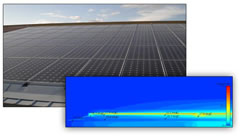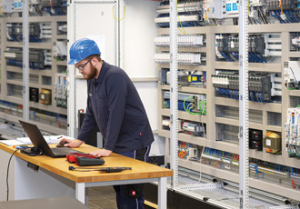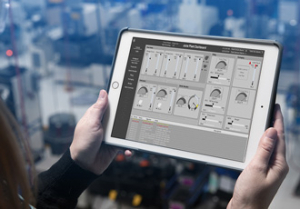Flow Simulation Improves Photovoltaic Solar Panel Performance
4th September 2008
Source:
Flomerics

Schueco, one of the leading producers of photovoltaic panels, used Flomerics’ Flovent computational fluid dynamics software to redesign its products to improve their thermal performance so that 15% to 20% more panels can be used in a given space. Today’s photovoltaic panels present a major thermal design challenge since every degree Centigrade of temperature rise reduces the power produced by 0.5%. “The CFD results helped us understand exactly how the panels were being heated and guided us as we made major improvements to the design,” said Hamid Batoul, Technical Director of Solar Department, Schueco International, Paris, France. “As the first in our industry to perform CFD simulation, we believe that we are now able to provide our customers with substantially higher power output than an equivalent competitive design.”
Schueco provides complete solar energy systems including all components needed to produce energy from the sun including panels, collectors, tanks, mounting system, control units and monitoring electronics. Sunlight hits the photovoltaic panels and generates direct current. The UK government sponsored Energy Saving Trust estimates that microgeneration could reduce the UK’s carbon emissions by 15% compared with the present mix of energy generation. The Rocky Mountain Institute in Snowmass, Colorado recently released a study that showed that output of small scale power sources will soon outstrip the world’s nuclear power industry.
Schueco was the first company in the solar energy business to recognize that substantial improvements in photovoltaic panel performance could be achieved by optimizing thermal design. “I previously worked for several companies making telecommunications equipment and used thermal simulation to solve thermal challenges,” Batoul said. “I found that Flomerics’ Flotherm CFD software was the most powerful tool available in that space. Performing thermal simulation of solar energy systems requires different software because of the need to model building materials that play a role in thermal performance. Flomerics offers Flovent CFD software designing for addressing heating, ventilation and cooling problems in buildings. We tried Flovent and found it met all our requirements such as modeling the thermal characteristics of glass and simulating the effects of radiation on the panels.”
Batoul uses Flovent to model complete solar systems. Flovent simulates the absorption and reflection of solar energy by the panels, the transfer of heat to aluminum profiles and the surrounding air, etc. “The CFD results helped us understand exactly how the panels were being heated and guided us as we made major improvements to their design,” Batoul said. “Examining the flow of air under the photovoltaic panels showed that the size of the passageway was constricting the flow of air. We increased the depth of the profile that supports the photovoltaic panels to increase the distance between the panels and the roof. Re-running the simulation demonstrated that this increased the airflow and reduced the temperature of the photovoltaic panels. Through these studies, we optimized the design of the solar energy systems and also gained an understanding of how temperature is affected by different arrangements of panels and ambient conditions.”
Schueco was the first company in the solar energy business to recognize that substantial improvements in photovoltaic panel performance could be achieved by optimizing thermal design. “I previously worked for several companies making telecommunications equipment and used thermal simulation to solve thermal challenges,” Batoul said. “I found that Flomerics’ Flotherm CFD software was the most powerful tool available in that space. Performing thermal simulation of solar energy systems requires different software because of the need to model building materials that play a role in thermal performance. Flomerics offers Flovent CFD software designing for addressing heating, ventilation and cooling problems in buildings. We tried Flovent and found it met all our requirements such as modeling the thermal characteristics of glass and simulating the effects of radiation on the panels.”
Batoul uses Flovent to model complete solar systems. Flovent simulates the absorption and reflection of solar energy by the panels, the transfer of heat to aluminum profiles and the surrounding air, etc. “The CFD results helped us understand exactly how the panels were being heated and guided us as we made major improvements to their design,” Batoul said. “Examining the flow of air under the photovoltaic panels showed that the size of the passageway was constricting the flow of air. We increased the depth of the profile that supports the photovoltaic panels to increase the distance between the panels and the roof. Re-running the simulation demonstrated that this increased the airflow and reduced the temperature of the photovoltaic panels. Through these studies, we optimized the design of the solar energy systems and also gained an understanding of how temperature is affected by different arrangements of panels and ambient conditions.”
Similar articles
More from Flomerics
- Laser Design Offers SLP-500 High-Speed Laser Probe 14th May 2009
- Simulation Helps Develop Spray Gun with 50% Larger Pattern in Significantly Less Time 30th April 2009
- Giles Gaskell Joins Laser Design & GKS Inspection Services Team 17th March 2009
- Embedded CFD Helps Reduce Number of Thermal Prototypes from Up to 12 to 1 4th March 2009




 technology at Jacobs Vehicle Systems.JPG)







Write a comment
No comments